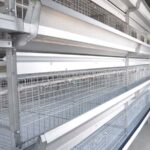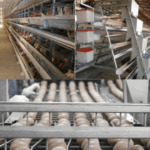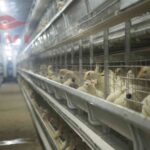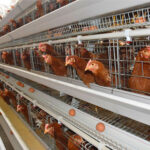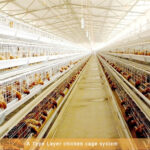Pay attention to these 6 points when investing in layer breeding
Eggs can also be said to be the cheapest source of complete protein. Each egg can supply about 6 grams of protein, and its price is much cheaper than all kinds of meat. Therefore, in recent years, many people have followed suit and entered the layer breeding industry.
1. Large-scale chicken breeding
Laying hens have entered the era of meager profit. In order to further increase the scale and land utilization rate, only through the scale effect can the breeding efficiency be improved. Large-scale breeding can not only effectively save social resources and reduce costs, but also effectively promote technological progress. It is a necessary foundation for implementing standardized production and improving the quality of livestock products. This is also in line with the current consumer health and safety concept of consumption.
2. Strengthen the disease prevention and control of layer farms
Layer farms are generally immunized against Marek, Newcastle disease, infectious bursal disease, infectious bronchitis, chicken pox and lower egg production syndrome. When performing the immunization program, pay attention to the selection, storage and vaccination methods of the vaccine. Manure and sick and dead chickens are bad factors in spreading the disease. Dead chickens should be buried deep or treated in a harmless manner. Do not pile chicken manure near the chicken coop. Do a good job of daily hygiene and regular disinfection, especially after the chicken manure is removed, it must be thoroughly cleaned and disinfected carefully.

3. Cultivate high-quality and robust chicks
During the brooding period, temperature and light must be controlled according to the corresponding feeding manual. Generally speaking, the brooding temperature starts at 33°C and decreases by 2°C every week until 21°C; the light starts from 24 hours a day and decreases by 2 hours a week to 12 hours. Vaccination should be carried out according to routine immunization procedures, and beaks should be cut off at the age of 8-10 days. Attention should be paid to ventilation. Longitudinal ventilation and wet curtain ventilation are better. The key to the growing period is to control the weight and improve the uniformity. Practice has shown that the uniformity of body weight between 16 to 18 weeks of age is positively correlated with egg production durability and survival rate. The neatness of breeding chickens is an important indicator. The body shape difference is small, the chicken flocks are well-developed, and the sexual maturity can be synchronized. The production time can be consistent in the future, and the egg production peak will be high.
4. Reduce feed cost
Feed costs for layer farms account for 60% to 75% of the total cost, and some even as high as 80% to 90%. In order to reduce feed costs, it is necessary to use cheap, nutritious, self-produced or convenient raw materials for purchasing, and to reasonably formulate diets according to the physiological characteristics of chickens at different stages.
5. Strengthen scientific management during the laying period
13-23℃ is the most suitable temperature range for chickens to lay eggs. Too high or too low temperature will affect the egg production rate and eggshell quality of chickens. Therefore, we must do a good job of winter cold protection and warmth. Good ventilation in the house Ventilation and ventilation can play a role in draining pollution and regulating the temperature and humidity in the house. Especially in large-scale intensive chicken farms, ventilation and air exchange play an important role in the development of chicken egg production potential. Reducing stress factors Any sudden changes in environmental conditions will panic the chickens and cause a stress response, leading to poor appetite, decreased egg production, and soft-shelled eggs. In addition to taking targeted measures to reduce stress factors, scientific chicken house management procedures should be formulated and strictly implemented, including lighting, ventilation, feeding, water supply, and food replacement.
Automated poultry breeding equipment includes: chicken battery layer cages, broiler cages, automatic manure removal systems, automatic feeding systems, automatic drinking water systems, automatic egg collection systems, environmental control systems, etc. It requires a lot of money, so inexperienced farmers can use semi-automatic poultry farming equipment first, and then upgrade and optimize the equipment later.
